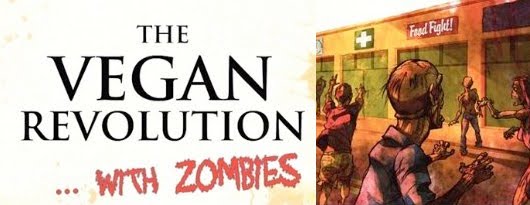Come Tomorrow by Jayaprakash Satyamurthy
It is a strange effect of the internet age when people you have never met in person feel like a close friends after years of online interaction. This author is one of those for me. Jayaprakash Satyamurthy is a writer based in Bangalore India but is someone whose opinions I have always respected. He and I have much in common. We both have homes filled with rescued animals, are vegan, love Black Sabbath, old school science fiction, and writing weird shit. So why has it taken me this long to read his work? Good question as he has even been a guest on Dickheads for our Counterclock World episode.
I never had that fear that he wouldn’t be a good writer, So it is no shock that Come Tomorrow is a great collection of powerful writing deserving more attention. I want to be careful here and I think I need to approach an issue that I know Jayaprakash has addressed recently as well.
I read plenty of old school so with newer genre fiction I do at times choose work many times passed on writer's whose company I enjoy. I also try to balance the overly white-male problem of genre fiction. As an Indian writer Satyamurthy has made clear there is a fine line when writing about his hometown where you can feel western readers having a gee-whiz reaction to reading about “exotic” locations that can feel icky. The reality is I like reading the local flare of authors from anywhere, Jayaprakash in India, N.K. Jemison in New York City or Joe Lansdale in East Texas.
I like geography in fiction, so I have to say I like that Satyamurthy’s stories in this collection have a grounded feeling in his city, one obviously I know little about. The reality is that feeling melted to the background and is way down the list of reasons I LOVED this book. I got into the stories that surprisingly connect subtle ways I found the setting really invisible at times. I have a favorite but all 10 stories contain a powerful evident on every page. The book gives indications of influence often there are moments of cosmic dread that recall Lovecraft of course, but also Weird Tales greats like Aickman and Clark Aston Smith. Also moments mundane cracks of reality more in line with the Philip K Dick influence I can’t help that see.
The book opens with the title story which has a ghost story inside of a ghost story set-up and brings moments of cosmic dread when you are not expecting it. The first of many powerful moments that highlight Satyamurthy’s power for building comes in this story. A character is having a nightmare that they are covered in rats.
“The sun rose, and set, and rose again, many times over, but the rats still covered me, a foul cloak that adhered to me no matter what I did, and I could not make out the streets I was running through were.”
That is one hell of an evocative sentence. Very few writers can say so much and pack so much vibe into a single sentence. The second story presents a really powerful kind of paranoia in a character who is driven mad by an intense form of pattern recognition. It is subtle but the story manages to create a hopeless pull in the patterns. The character refers to his marvelous terrible brain. I think many of who writers of dark fiction can relate to that. This is a powerful story that I found myself re-reading when working on this review.
My favorite story in the collection is “Shadow Me No More.” This is a powerful weird tale that could also be described as surreal horror. I loved every strange word of this paranoid story of a person haunted by their shadow. “I can’t grab my shadow’s throat, can’t shut up what never makes a noise. He follows me everywhere and I can’t help but read the terrible knowledge we share in his swagger, his svelte glide, his smooth traverse across the wall and pavement, poster and window, puddle and cowpat. I can’t help detect smug, subtle mockery as languidly oozes from my feet when the sun is angled and the shadows are long.”
From start to finish this was my favorite story. Of course, I like the music and metal references in “No More Iron Crosses.” Since I was listening to music as I was reading I could turn on the Massive Attack song mentioned in the story and this provided a nice synergy. Also when in the next story Axes of Discordance the character started a band I turned the band Satyamurthy plays bass in Djinn and Miskatonic and that helped create a great vibe.
I am not sure what it says thematically but several of the characters have careers or jobs in advertising. There are small tiny connections in the stories but mostly they stand on their own. The comparisons to great writers like Thomas Liggoti and Laird Barron are fair. There is a similar level of quality. Readers looking for that cosmic level of dread combined with razor-sharp wordsmithing and uncanny knack for looking at the weird bubbles floating up in our reality then Come Tomorrow is worth every penny spent or minute of attention given.


No comments:
Post a Comment